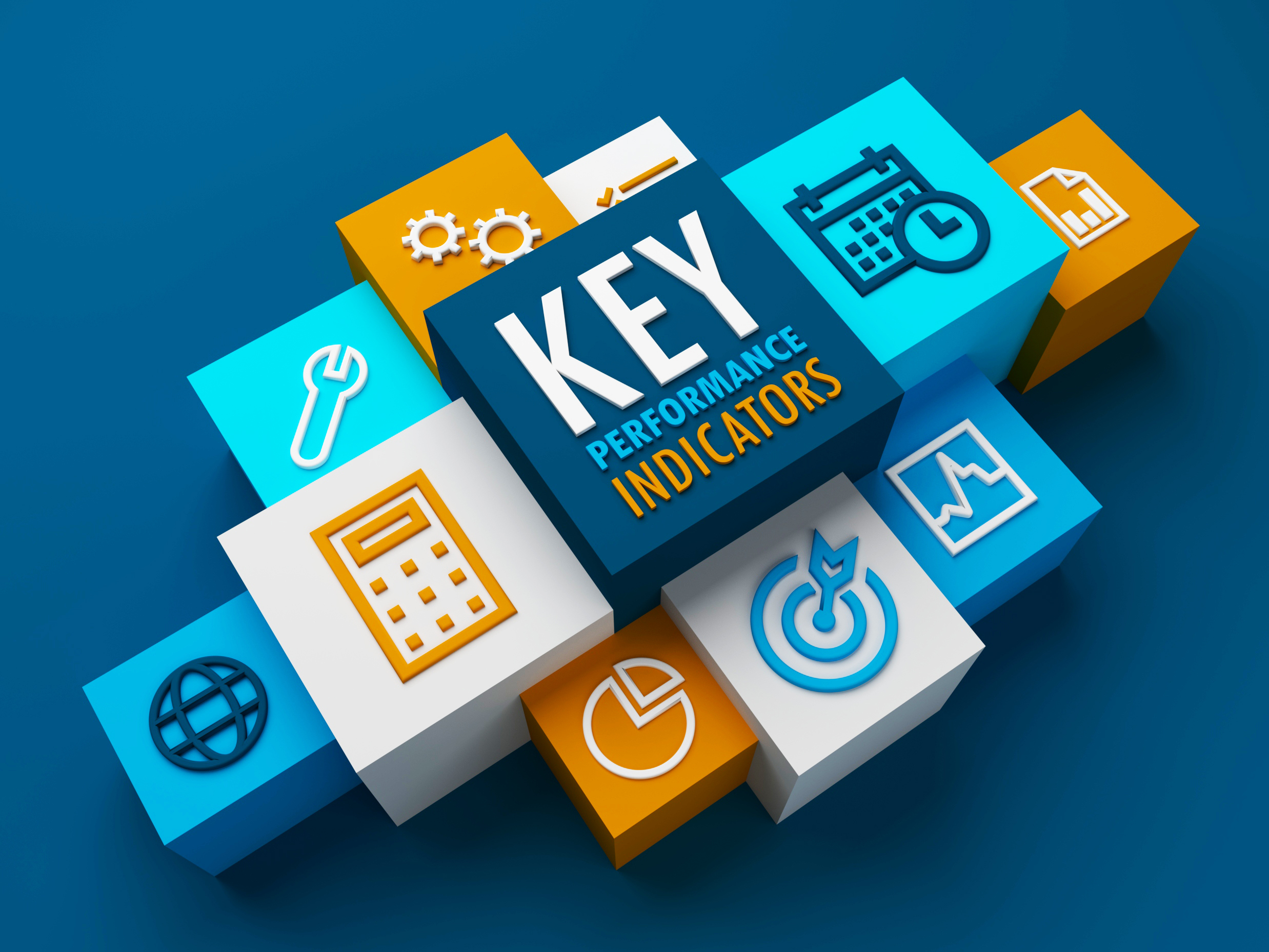Competitive intelligence KPIs are specific metrics that track the effectiveness of your CI program. Measuring the success of your Competitive Intelligence KPIs involves evaluating its effectiveness in enhancing strategic decision-making and improving competitive positioning. Success measurement can be both qualitative and quantitative, focusing on the value delivered to the organization.
This blog post dives into the top 7 Competitive Intelligence KPIs (Key Performance Indicators) that go beyond guesswork. We’ll explore metrics that assess the impact of your CI program on business outcomes, stakeholder engagement, and program efficiency.
Here are top 7 Competitive intelligence KPIs and metrics to consider:
1. Win Rate & Competitive Win Rate as CI KPIs
Definitions:
- Win Rate: Percentage of total deals closed. Reflects overall sales and marketing effectiveness.
- Competitive Win Rate: Percentage of deals won when facing a direct competitor. Shows ability to outperform rivals.
Measuring CI Effectiveness:
- An increasing Competitive Win Rate signals that CI insights are helping sales teams:
- Exploit competitor weaknesses.
- Tailor pitches to counter competitors.
- Emphasize unique value propositions.
Interpreting Metrics:
- Growth in both metrics indicates overall success.
- A boost in Competitive Win Rate (even if Win Rate is flat) suggests CI is improving competitiveness in direct matchups.
Limitations:
- Win Rates are influenced by external factors like market trends.
- Track alongside other KPIs (e.g., content usage, stakeholder engagement) for a complete performance view.
2. Revenue Growth as a CI KPI
Why It Matters:
While CI programs don’t directly generate revenue, they provide insights that improve decision-making, sales effectiveness, and marketing strategies, contributing to revenue growth.
How CI Drives Revenue Growth:
- Identifying competitor weaknesses to improve offerings.
- Informing targeted marketing campaigns.
- Boosting win rates in competitive deals.
- Reducing churn by addressing competitive threats proactively.
Challenges:
- Revenue growth is influenced by external factors like market trends and product innovation.
- Isolating CI’s specific impact on revenue can be difficult.
Effective Use:
- Track alongside KPIs like Win Rate and Customer Retention Rate to identify correlations with CI efforts.
- Attribute revenue influenced by CI, such as deals won due to specific competitive insights.
Key Consideration:
Revenue Growth is a lagging indicator. Pair it with leading CI metrics to assess the full impact on current and future revenue.
3. Customer Retention Rate (CRR) as a CI KPI
Why It’s Valuable:
CRR highlights how effectively your CI program combats competitive threats to customer loyalty. Retaining customers is more cost-effective than acquiring new ones.
How CI Enhances CRR:
- Early Detection of Competitor Moves: Anticipate threats like new product launches or aggressive campaigns.
- Proactive Engagement: Address customer pain points before competitors exploit them.
- Retention Strategies: Tailor loyalty programs to counter competitive efforts.
Measuring CI’s Impact on CRR:
- Rising CRR indicates CI is mitigating threats and improving customer satisfaction.
- Track CRR alongside KPIs like Win Rate to assess your CI program’s effectiveness.
Limitations:
Churn can result from non-competitive factors like product issues or evolving customer needs. Analyze CRR in context with other metrics for a full picture.
Effective Use:
- Investigate cases where CI helped retain customers.
- Monitor correlations between competitor activity and CRR fluctuations to refine strategies.
4. Stakeholder Engagement as a CI KPI
Why It Matters:
Stakeholder engagement measures how effectively your CI program supports teams across the organization, driving informed decision-making in sales, marketing, and product development.
Key Metrics to Track:
- Content Usage: Frequency of accessing CI reports and briefings indicates relevance and value.
- Deal Support Requests: Increased requests highlight appreciation for CI insights in deal cycles.
- Surveys and Feedback: Gauge usefulness, timeliness, and relevance through stakeholder input.
- Training Feedback: Monitor effectiveness of CI training sessions and communication channels.
Benefits of High Engagement:
- Improved decision-making across departments.
- Stronger collaboration and a culture of competitive awareness.
- Stakeholders advocate for the CI program, helping secure resources.
Challenges:
- Measuring the direct impact on decision-making can be subjective.
- Engagement doesn’t always translate into measurable outcomes like revenue increases.
Actionable Steps:
- Combine engagement metrics with business KPIs like Win Rate and CRR to assess impact.
- Regularly solicit feedback to tailor CI outputs to stakeholder needs.
- Encourage open communication to enhance collaboration and proactive CI use.
5. Time to Insight (TTI): A Key CI KPI
What It Measures:
Time to Insight tracks how quickly your CI team gathers, analyzes, and delivers actionable insights to address a business need.
Why It Matters:
- Enables faster responses to competitor actions and market changes.
- Supports proactive decision-making.
- Enhances organizational agility in dynamic markets.
How to Measure TTI:
- Define the business question requiring CI.
- Track time from identifying the need to delivering insights, including:
- Data Gathering: Research and monitoring.
- Analysis: Interpreting data and identifying trends.
- Delivery: Reporting insights to stakeholders.
Benefits of Faster TTI:
- Accelerates organizational response to market opportunities.
- Improves decision-making based on timely intelligence.
- Boosts adaptability in competitive environments.
Factors Impacting TTI:
- Complexity of Questions: Simple queries take less time than strategic ones.
- Data Availability: Easily accessible, well-organized data speeds up analysis.
- Team Resources: Skilled and well-equipped teams reduce turnaround time.
Strategies to Improve TTI:
- Automate Processes: Use tools to streamline data collection and analysis.
- Organize Data: Maintain a well-structured database for quick access.
- Prioritize Requests: Focus resources on high-urgency insights.
- Enhance Communication: Ensure clear, open channels between CI teams and stakeholders.
6. Cost per Insight (CPI): A Limited CI KPI
What It Measures:
CPI calculates the cost of generating a single actionable CI insight by dividing the total CI program cost (e.g., personnel, tools, data sources) by the number of insights produced.
Challenges of CPI:
- Defining “Insight”: Insights vary in complexity; comparing costs can be subjective.
- Indirect Costs: Activities like monitoring and relationship-building may not directly result in an insight but still add value.
- Efficiency vs. Depth: A low CPI might suggest cost-cutting at the expense of depth or quality.
When to Use CPI:
- Benchmarking: Compare program efficiency against industry standards (though variations make comparisons tricky).
- Cost Optimization: Track CPI trends to identify areas for process improvement and cost savings.
Better Alternatives for Measuring Efficiency:
- Time to Insight (TTI): Tracks how quickly insights are delivered.
- Value Delivered: Focuses on the impact of CI on outcomes like win rates or customer retention.
Recommendations:
- Use CPI cautiously and alongside KPIs like TTI and Value Delivered.
- Prioritize delivering impactful, actionable insights over minimizing costs alone.
7. Return on Investment (ROI): Assessing CI Effectiveness
Why ROI Matters:
- Justifies CI investments in tools, personnel, and data by quantifying its financial impact.
- Positions CI as a strategic asset that contributes to the bottom line.
Challenges in Measuring ROI for CI:
- Indirect Impact: CI informs decisions, but isolating its specific contribution can be tricky.
- Attribution: Multiple factors influence sales and retention, making CI’s direct impact hard to quantify.
Strategies to Measure ROI:
- Revenue Influenced: Track instances where CI directly helped win deals or retain customers, assigning associated revenue to CI.
- Cost Savings: Quantify avoided losses or optimized investments due to CI insights.
- Improved Win Rates: Translate increased competitive win rates into revenue.
- Reduced Churn: Calculate saved customer lifetime value by addressing competitive threats.
Beyond ROI:
- Use ROI alongside KPIs like stakeholder engagement and time to insight for a holistic evaluation.
- Focus on CI’s role in enabling better decision-making and fostering sustainable growth.
Recommendations:
- Develop a clear ROI calculation methodology tied to CI goals and business strategy.
- Highlight CI’s broader benefits, such as strategic insights and competitive advantage, beyond financial returns.
Competitive Intelligence: The KPIs That Keep You Winning
So, ditch the guesswork and embrace data-driven decision-making. Implement these Competitive Intelligence KPIs to unlock the true potential of your CI program, and watch your organization outperform the competition.
Are you ready to unlock the full potential of competitive intelligence? At Cognition, we offer a comprehensive suite of CI solutions, from data gathering and analysis tools to expert guidance on crafting a winning CI strategy. Contact us today to learn how we can help your organization stay ahead of the curve.






 Hi, This is Emma. Let’s get the conversation started!
Hi, This is Emma. Let’s get the conversation started!